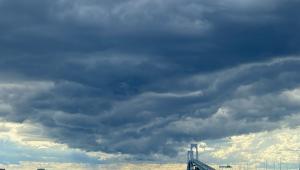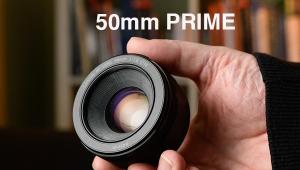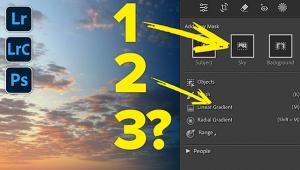Prints Don’t Match The Image On Screen; Answers For A Color Managed Printing Workflow Page 2
To obtain a match between your display and print output first requires calibrating and profiling your display as accurately as possible. I recommend using either Datacolor’s Spyder3Elite/Pro or X-Rite’s i1Display 2 hardware and software for display calibration and profiling. Both are wizard-driven functions, so just follow the instructions on screen.
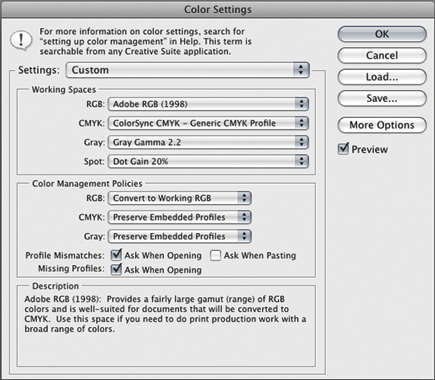 |
|
|
If your prints are too dark the most likely cause these days is an LCD display that is too bright. In the old days of CRT monitors the brightness range of the monitor was close to the reflective brightness range of a good quality photo print. But LCD displays are natively much brighter by as much as 2-4 times. This causes a digital photo file to be adjusted for brightness to look correct on the screen setting where the image midpoint in the file is too high, causing it to be printed too dark. As part of a display’s calibration and profiling, the white luminance point should be no higher than 120.0 CD/m2; lower than 110.00 CD/m2 usually results in poor display image quality. One feature of LCD displays you should be aware of is that just lowering the brightness setting on the display does not solve the problem. It may seem counterintuitive, but the white luminance level is adjusted and controlled by the display’s contrast adjustment control, not the brightness adjustment.
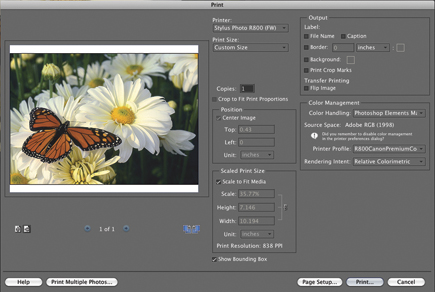 |
|
|
Once your display is calibrated and profiled be sure the new profile is set as the default for your system by going to (Windows) Control Panel>Displays>Advanced>Color Management. In the dialog list your new profile should be listed and marked as default.
Windows Vista Alert: When Microsoft’s Windows Vista was released a bug was found that interferes with the display profile function. Each time an on-screen security alert occurs with a pop-up window, the alert knocks out the display’s set state created at boot-up, making it function as a non-profiled display. To my knowledge this bug has not been eliminated, and there are just three possible workarounds: 1) Turn off Windows Security (dangerous); 2) Reboot every time a security alert window pops up (a pain the…); or 3) Delete Vista and install Windows XP Pro.
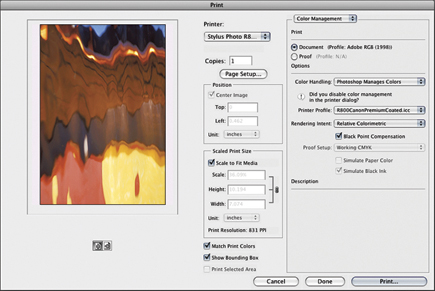 |
|
|
2. It’s not enough to calibrate and profile a display to obtain screen to print matching performance. You must be using a photo application that supports color management and it must be set up correctly. Applications that support color management include all current versions of Adobe’s Photoshop from CS to Elements, Adobe’s Lightroom, Apple’s Aperture (as well as most Apple graphic programs like iPhoto), Corel’s Draw and Paint Shop Pro Photo X2. Most inexpensive Windows photo applications do not provide support for color management functioning for screen to print matching.
With all Adobe applications and most others that have color management support, to initiate the function you need to open Color Settings and that dialog window should indicate that the application recognizes the display profile. Then set the application’s RGB work space profile, which should be Adobe RGB (1998) for printing or sRGB only for output to the web. (With Elements choose the setting for print output to work in Adobe RGB.)
 |
|
|
3. When you select to make a print use the Print Preview window and choose to have Photoshop “control color.” And, note when this option is selected (Adobe RGB is designated the Source profile), you also need to select the Destination or Printer profile for the printer and paper you will be using. Finally, after the Print button is triggered, and in the Printer Driver dialog window, be sure to select “no color adjustment.”
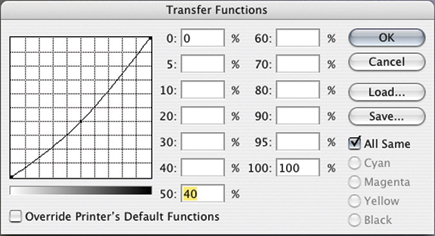 |
|
|
4. Photoshop CS, CS2, and CS3 “print too dark” correction: You can control the print lightness/darkness with the full version of Photoshop using a Print Preview option that’s located in “more options” at the bottom of the Preview window by clicking on the Output tab, and then on the Transfer button. With the Transfer dialog window up, the procedure is fairly straightforward using the graph interface similar to Curves. Use your mouse cursor and click on the exact center of the graph, which activates the 50 percent value box at the bottom of the column to the right of the graph. If you then drag the curve down so it bends toward the lower right corner, and then click OK and continue the print procedure normally, the resulting print will be lighter. In my tests I found reducing the 50 percent to 40 percent was a good starter lightening level. That was just a guess that may have to be refined by trial and error print testing. Once a reduction in the 50 percent middle value is tested and established to correct for the fact your prints are too dark, then on the far right of the dialog you can save the Transfer adjustment as a file you can open later for subsequent printing. However, you may find that you may want to experiment with this Transfer curve adjustment to suit different subjects and tastes.
David Brooks can be reached via e-mail at: goofotografx@gmail.com.
- Log in or register to post comments























